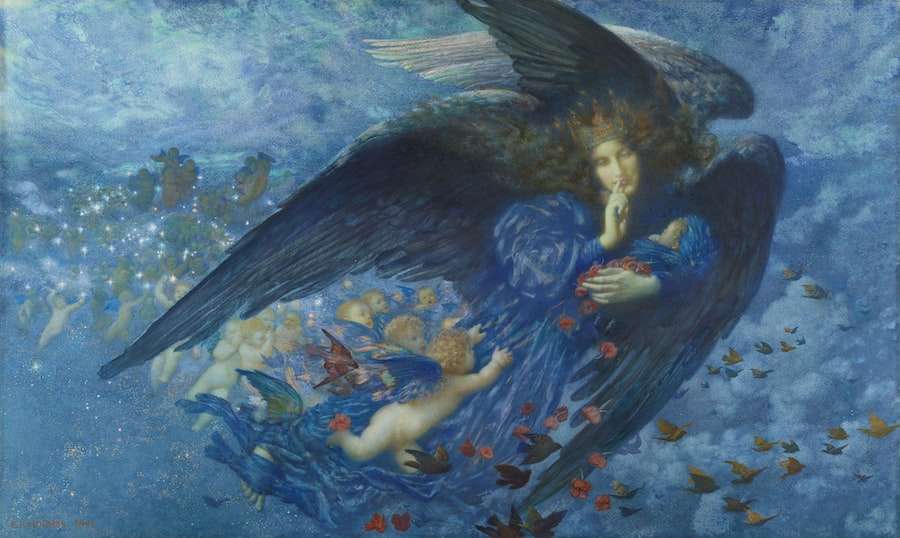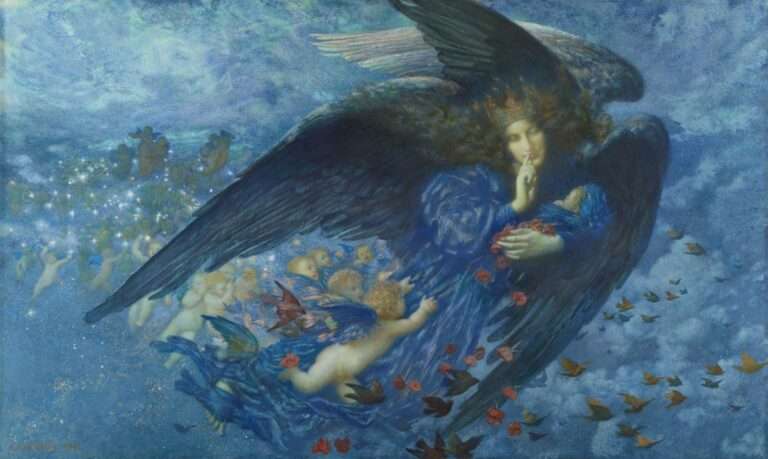Contemporary Art Symbolism
Symbolism has always played a significant role in art, allowing artists to convey deeper meanings and messages through their work. In contemporary art, symbolism continues to be an important tool for artists to express their ideas and engage with viewers on a profound level. By using symbols, artists can communicate complex emotions, social and political commentary, and explore themes of spirituality and mythology. Understanding the importance of symbolism in contemporary art is crucial for appreciating and interpreting the hidden messages and layers of meaning within these artworks.
Understanding the Importance of Symbolism in Contemporary Art
Symbolism in art refers to the use of symbols or symbolic elements to represent ideas, emotions, or concepts. These symbols can be objects, colors, animals, or even abstract shapes that carry a deeper meaning beyond their literal representation. The use of symbolism in art dates back to ancient times, where it was used in religious and mythological contexts to convey spiritual beliefs and cultural values.
In contemporary art, symbolism continues to be relevant as artists seek to express their thoughts and emotions in a visually compelling way. Symbolism allows artists to communicate complex ideas that may be difficult to express through words alone. It adds depth and layers of meaning to their work, inviting viewers to engage with the artwork on a deeper level and interpret its hidden messages.
Deciphering the Hidden Messages in Artistic Imagery
Artistic imagery often contains hidden messages that require interpretation. These hidden messages can be conveyed through various techniques such as visual metaphors, allegories, or juxtapositions. By understanding these techniques and learning how to interpret hidden messages in art, viewers can gain a deeper understanding of the artist’s intentions and the underlying themes within the artwork.
For example, Salvador Dali’s famous painting “The Persistence of Memory” contains several hidden messages. The melting clocks symbolize the fluidity of time and the fleeting nature of existence. The barren landscape represents the desolation and decay of the human condition. By deciphering these hidden messages, viewers can appreciate the deeper meaning behind the artwork and engage with the artist’s ideas.
Unraveling the Layers of Symbolism in Modern Art
Modern art often incorporates layered symbolism, where multiple symbols are combined to convey a complex message or explore multiple themes simultaneously. These layers of symbolism can be challenging to identify and interpret, but they add depth and richness to the artwork.
An example of layered symbolism can be seen in Frida Kahlo’s self-portraits. In her painting “The Two Fridas,” she depicts herself as two different versions of herself, each with its own symbolism. One Frida represents her Mexican heritage, while the other represents her European ancestry. The symbolism of the two Fridas explores themes of identity, duality, and cultural heritage.
Identifying and interpreting layered symbolism requires careful observation and research. By analyzing the various symbols within an artwork and understanding their historical and cultural significance, viewers can unravel the layers of meaning and gain a deeper appreciation for the artwork.
Exploring the Significance of Color in Contemporary Art
Color plays a crucial role in conveying meaning in art. Different colors evoke different emotions and can symbolize various concepts or ideas. Artists often use color symbolism to enhance their message and create a specific mood or atmosphere within their artwork.
For example, the color red is often associated with passion, love, or anger. In Edvard Munch’s famous painting “The Scream,” the use of vibrant reds intensifies the sense of anxiety and despair conveyed by the central figure. The color choice adds depth to the artwork and enhances its emotional impact.
Interpreting color symbolism in art requires an understanding of cultural associations and personal experiences. Colors can have different meanings in different cultures, so it is essential to consider these cultural contexts when interpreting color symbolism in art.
The Role of Mythology in Contemporary Art Symbolism

Mythology has long been a source of inspiration for artists, and its symbolism continues to be relevant in contemporary art. Mythological symbolism allows artists to explore universal themes and archetypal narratives that resonate with viewers on a deep level.
Artists often incorporate mythological figures or stories into their artwork to convey specific ideas or emotions. For example, in Sandro Botticelli’s painting “The Birth of Venus,” the goddess Venus symbolizes love, beauty, and fertility. The use of mythology adds a layer of depth and meaning to the artwork, inviting viewers to reflect on these universal themes.
The significance of mythological symbolism in art lies in its ability to tap into the collective unconscious and evoke powerful emotions and associations. By drawing on these ancient stories and symbols, artists can create artworks that transcend time and culture, resonating with viewers across generations.
Analyzing the Use of Animals and Nature in Modern Art
Animals and nature have long been used as symbols in art, representing various concepts such as freedom, power, or the cycle of life. In contemporary art, artists continue to incorporate animal and nature symbolism to explore themes of environmentalism, human-animal relationships, or the connection between humans and the natural world.
For example, in Banksy’s street art piece “Girl with Balloon,” the image of a girl reaching out for a red heart-shaped balloon symbolizes innocence, hope, and the fleeting nature of happiness. The use of the balloon as a symbol adds depth to the artwork and invites viewers to reflect on their own desires and aspirations.
The significance of animal and nature symbolism in art lies in its ability to connect viewers with the natural world and evoke emotions related to our primal instincts. By using animals and nature as symbols, artists can create artworks that resonate with viewers on a visceral level.
Examining the Social and Political Commentary in Contemporary Art
Art has always been a powerful tool for social and political commentary, allowing artists to express their opinions and critique societal issues. In contemporary art, artists continue to use their work as a platform for addressing social and political concerns, sparking conversations and raising awareness.
Artists often incorporate symbols or imagery related to specific social or political issues to convey their message. For example, in Shepard Fairey’s iconic “Hope” poster depicting Barack Obama, the use of the color blue, combined with the word “hope,” symbolizes optimism and change. The artwork became a symbol of Obama’s presidential campaign and a rallying cry for his supporters.
The impact of social and political commentary in art lies in its ability to challenge the status quo, provoke thought, and inspire action. By addressing pressing issues through their artwork, artists can contribute to social change and create a dialogue around important topics.
The Power of Religious and Spiritual Symbolism in Artistic Expression
Religious and spiritual symbolism has been a prominent feature in art throughout history. In contemporary art, artists continue to draw on religious and spiritual symbols to explore themes of faith, transcendence, or the human quest for meaning.
Religious and spiritual symbolism can be seen in various forms, such as religious iconography, sacred geometry, or representations of deities. For example, in Damien Hirst’s artwork “The Physical Impossibility of Death in the Mind of Someone Living,” the preserved shark suspended in formaldehyde can be interpreted as a symbol of mortality and the fragility of life.
The significance of religious and spiritual symbolism in art lies in its ability to evoke profound emotions and contemplation. By using these symbols, artists can tap into the universal human experience and explore existential questions that resonate with viewers on a spiritual level.
Interpreting the Meaning Behind Abstract Art
Abstract art is characterized by its non-representational or non-objective nature, often consisting of shapes, colors, and forms that do not directly depict recognizable objects. Interpreting the meaning behind abstract art can be challenging, as it relies heavily on the viewer’s subjective interpretation and personal experiences.
Abstract art allows artists to explore emotions, concepts, or ideas in a non-literal way, inviting viewers to engage with the artwork on an intuitive level. By using abstract forms and colors, artists can convey complex emotions or states of mind that may be difficult to express through representational art.
The significance of abstract art in contemporary art lies in its ability to challenge traditional notions of representation and invite viewers to explore their own interpretations. By embracing ambiguity and open-endedness, abstract art encourages viewers to reflect on their own experiences and emotions.
The Evolution of Symbolism in Contemporary Art and its Impact on Society
Symbolism in art has evolved over time, reflecting changes in society, culture, and artistic movements. From the religious symbolism of the Renaissance to the political commentary of the 20th century, symbolism continues to be a powerful tool for artists to engage with viewers and convey their ideas.
The impact of symbolism in contemporary art on society is multifaceted. It can spark conversations, challenge societal norms, and inspire social change. By addressing pressing issues through their artwork, artists can raise awareness and contribute to a more inclusive and empathetic society.
In conclusion, symbolism plays a crucial role in contemporary art, allowing artists to convey deeper meanings and engage with viewers on a profound level. By understanding the importance of symbolism in art, viewers can appreciate the hidden messages, layered meanings, and social commentary within these artworks. Symbolism adds depth and richness to art, inviting viewers to reflect on their own experiences and interpretations. Through its evolution over time, symbolism continues to shape contemporary art and its impact on society.
If you’re interested in exploring the symbolism behind contemporary art, you might find this article on the symbolism of the moon fascinating. The moon has long been a powerful symbol in various cultures, representing mystery, femininity, and cycles of life. To delve deeper into its significance and how it is portrayed in art, check out this insightful article: Symbolism of the Moon.
FAQs
What is contemporary art symbolism?
Contemporary art symbolism refers to the use of symbols and imagery in contemporary art to convey meaning and evoke emotions.
What are some common symbols used in contemporary art?
Common symbols used in contemporary art include animals, plants, religious and cultural icons, and everyday objects.
What is the purpose of using symbolism in contemporary art?
The purpose of using symbolism in contemporary art is to communicate complex ideas and emotions in a way that is accessible to the viewer.
How does contemporary art symbolism differ from traditional symbolism?
Contemporary art symbolism differs from traditional symbolism in that it often incorporates new and unconventional symbols and imagery, and may challenge traditional interpretations of symbols.
What are some examples of contemporary artists who use symbolism in their work?
Some examples of contemporary artists who use symbolism in their work include Banksy, Yayoi Kusama, and Jeff Koons.
How can viewers interpret the symbolism in contemporary art?
Viewers can interpret the symbolism in contemporary art based on their own personal experiences and cultural background, as well as the context in which the artwork was created.





